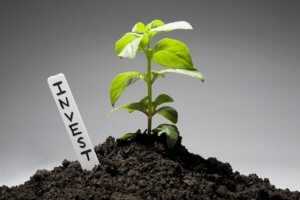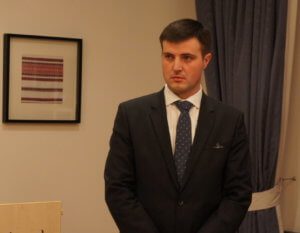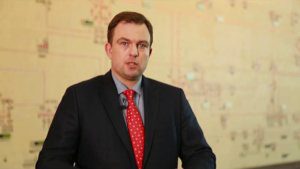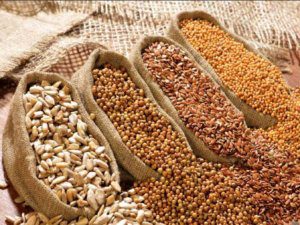
The Epicenter K Group, which was developing agricultural business under the Epicenter Agro brand in the past two years, plans to invest UAH 1.4 billion in construction and reconstruction of grain silos and UAH 665 million in the upgrade of agricultural machinery fleet in 2018. “Today, $150 million in hryvnia equivalent has been invested in what we already have [agricultural assets]. This year the investment component is UAH 2 billion, of which UAH 1.4 billion is the construction of new and reconstruction and expansion of operating silos and UAH 665 million for the renewal of equipment. The main sources of funding are idle funds of Epicenter,” General Director of Epicenter K Petro Mykhailishyn said at a press conference devoted to the development strategy of Epicenter K in the Ukrainian agrarian market.
He said that the turnover of Epicenter and Nova Linia hypermarket chains managed by the group amounted to UAH 42 billion in 2017.
As it was said at the press conference, the new agroholding has been operating on the Ukrainian market since 2015. During this time the group actively expanded its land bank, which is focused in Cherkasy, Khmelnytsky, Ternopil and Kyiv regions. The company plants four main crops: winter wheat, sunflower, corn and winter rapeseed.
“We started in 2016, having a land bank of 445 hectares. Today, we have 110,000 hectares of land officially registered with contracts with the land owners… When we realized that companies that have imported components in their activities are trying to become exporters, we chose the path of agribusiness… The plan for this year on the purchase of imported goods is $170 million, and we exported agricultural products for $50 million last year. There is a gap. We need to increase exports three times to hedge our financial risks,” Mykhailishyn said.

Investment of Ukrainian companies in the introduction of innovative technologies, in particular, research and development (R&D), should be around UAH 5 billion, up to $200 million a year, Director General of the Ukrainian Agribusiness Club (UCAB) Taras Vysotsky has said. “According to expert estimates, companies need to invest 5-10% of revenue in innovative technologies. If this logic is followed, it is necessary to invest up to UAH 5 billion in the agrarian sector of Ukraine, up to $200 million per year namely in R&D, not taking into account the purchase of equipment,” he told Interfax-Ukraine after a press conference on the introduction of innovative technologies in the agricultural sector of Ukraine.
According to Vysotsky, at present, the level of penetration of innovations into the Ukrainian agricultural sector is estimated at 10-12% compared to the global market. Agroholdings occupy a lion’s share of the total number of companies actively using and introducing new technologies.
At the same time, in the opinion of the director general of the UCAB, 10% is enough for the “train to move”, and it takes three to five years for spreading the trend in the country.
“The process is already irreversible, it will move forward. To make 10% turned into a critical mass, conditionally in 60%, it will take from three to five years. This will not happen by 100%, as long as 70% are used, the leaders will move forward. In fact, we have eight-year cycles: from two to three years – the leaders appear, from three to five years – to implement technology on a national scale,” he said.

The abolition of the third group of taxpayers using simplified taxation scheme proposed by lawmakers would result in the reduction of the pace of IT industry growth and the large outflow of IT specialists from the country, the IT Ukraine association has said on its website. “Along with the “active users” of the third group listed in the text of the bill, representatives of creative industries also use the simplified taxation scheme in this group… These are areas like advertising, architecture, design and fashion, visual and audio content production and information technologies. It is the latter area that is developing most dynamically in Ukraine today, and it is for it that the consequences that may come after the enactment of the bill will be extremely negative,” the association said.
The abolition of the third group of taxpayers using simplified taxation scheme will lead to a significant reduction in the pace of the financial growth of the industry and a reduction in the volume of currency income, IT Ukraine said.
According to IT Ukraine, if the fiscal policy is changed, the industry will be facing a significant slowdown in growth, and the state will fall short of billions of U.S. dollars in the country’s economy. According to the association, the initiative proposed by the lawmakers will result in a reduction in the number of jobs in the industry and an outflow of specialists from the country.
“The opportunity to work with specialists on the model of the third group allows the industry to create new jobs (this year it is planned to increase them by 20-25%) and provides sustainable development of the industry,” the association said.
The association also said that, looking to the current fiscal policy of neighbor states with a mature economy, Ukraine risks losing its last advantages, which hinder the outflow of high-quality specialists to more developed countries. The IT Ukraine association was established in April 2004 by Miratech, SoftLine, Mirasoft, ProFIX, Ukrsoft and SoftServe.

The united power grid of Ukraine today can accept up to 3 gigawatts (GW) of new capacity of solar power plants and wind farms without an unbalanced response risk and serious changes to its structure, Ukrenergo Head Vsevolod Kovalchuk said at a roundtable in the Verkhovna Rada. According to him, this installed capacity of renewable energy facilities can be put into operation in December 2019. At the same time, the volume of the technical conditions already issued for the connection of new renewable energy capacities to the power grid amounts to 7,426 MW (4,200 MW for wind farms and 3,226 MW for solar power plants).
Kovalchuk said that if these capacities are introduced, it will be necessary to reduce the base of the nuclear power plants (NPPs) by 5,750 MW and increase the base of the thermal power plants (TPPs) by 2,800 MW. At the same time, this is contrary to the policy of decarbonization, and the “green” electricity is times more expensive than the nuclear generated one.
“This will lead to a need for a proportional reduction in the basic capacity of NPPs and an increase in generation at TPPs to ensure the required reserves. This contradicts the world and national policy of energy decarbonization, and the risks of energy dependence are increasing,” Kovalchuk said.
Thus, to increase the share of renewable energy in the balance of energy the power-speed mobile reserve (natural gas-fired stations, pumped storage) with a capacity of up to 3,000 MW must be put into operation. This will increase the basic load of nuclear power plants and reduce the load of thermal power plants. The demand regulation system and introduction of the auxiliary services market will also help to balance the energy system at the initial stage of going “green”.
According to the head of Ukrenergo, math critical power values for solar power plants and wind farms, which can be introduced without risk of unbalancing Ukraine’s power grid, are being completed. “We have a little more than a year before the turning point left. The decision how to develop power in Ukraine, if the “green light” for the further development of generation from renewable energy is given, should be taken today at both the national level and the level of all energy companies,” Kovalchuk said.

Mriya agroholding is mulling the possibility of creating a separate seed business, which would allow not only covering the needs of the holding, but also planting and selling own seeds to other companies, the company has said in a press release. “The work in this field has already begun: the seed factory of the company in Khorostkiv, starting from last year, provides services of bringing the seed material to the sowing conditions (cleaning and calibration) for companies engaged in the sale of seeds,” the agroholding said.
The capacity of the seed plant reaches 300 tonnes of grain seeds per day. It is equipped with two parallel lines and ensures the quality of seeds of more than 99% in terms of the purity of the material.
Mriya is a vertically integrated agro-industrial holding founded in 1992 by the Huta family. Today, its land bank is 180,000 ha in Ternopil, Khmelnytsky, Ivano-Frankivsk, Chernivtsi, Lviv and Rivne regions.